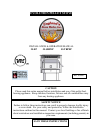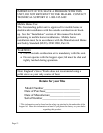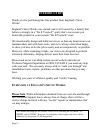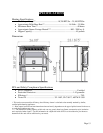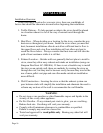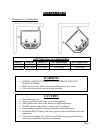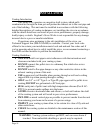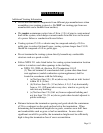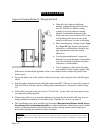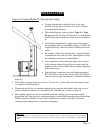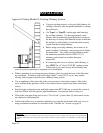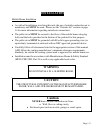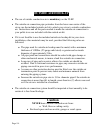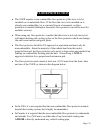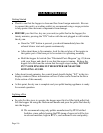
Page | 8
INSTALLATION
Venting Introduction
This pellet stove operates on a negative draft system, which pulls
combustion air through the burn pot and pushes the exhaust air to the vent pipe and
out of the building. This unit must be installed in accordance with the following
detailed descriptions of venting techniques; not installing the stove in accordance
with the details listed here can result in poor stove performance, property damage,
bodily injury or death. England’s Stove Works is not responsible for any damage
incurred due to a poor or unsafe installation.
If questions arise pertaining to the safe installation of the stove, our
Technical Support line (800-245-6489) is available. Contact your local code
official to be certain your installation meets local and national fire codes and if
you’re uncertain about how to safely install the stove, we recommend contacting a
local NFI certified installer to perform the installation.
Venting Guidelines
• ALWAYS install vent pipe in strict adherence with the instructions and
clearances included with your venting system.
• DO NOT connect this pellet stove to a chimney flue which also serves
another appliance.
• DO NOT install a flue pipe damper or any other restrictive device in the
exhaust venting system of this unit.
• USE an approved wall thimble when passing through a wall and a ceiling
support/fire stop when passing through a ceiling.
• ONLY use 3.0” or 4.0” Type L or Type PL pipe approved for pellet stove
venting; DO NOT use galvanized or B-Vent pipe.
• SEAL each joint of pellet vent with high temperature silicone (Part # AC-
RTV3) to prevent smoke spillage into the home.
• AVOID excessive horizontal runs and elbows, as both will reduce the draft
of the venting system and will result in poor stove performance.
• INCLUDE as much vertical pipe as possible to prevent smoke from the unit
from entering your home in the event of a power outage.
• INSPECT your venting system often, to be certain it is clear of fly-ash and
other restrictions.
• CLEAN the venting system as detailed in the maintenance section of this
manual.
WARNING: Venting system surfaces get HOT, and can cause burns if
touched. Noncombustible shielding or guards may be required.



